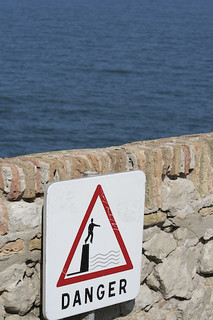
We are all (or maybe I should say most of us are) overcome with unanswerable questions. COVID-19 dominates our thinking and has drastically altered our lives. We are faced with impenetrable uncertainty about what comes next . . . and when it will come.
This is true for us as individuals. And while it may be difficult to focus too much on the fact, it is also true for our arts organizations. In both cases, whatever the new normal will be will be different, perhaps significantly so, from the old normal.
Almost inevitably, there will be more remote working, more video conferencing, more online access to cultural events–not like now, but more than there was. Handshakes and hugs among colleagues, even if they return, will be more circumscribed or at least less automatic. We will have a new appreciation for the gift of being able to see each other face to face; and, I hope, we will value the people who take advantage of our cultural offerings more deeply than before.
I have advocated for using this time to think about the future in new ways–Crisis as Opportunity and Community Citizenship. We can’t be about our normal business so why not imagine and prepare for a future in which we take steps leading us toward indispensability?
However, my thoughts are also turning a darker corner. I fear that the rampaging growth of income (and most other) inequality is going to be a raw wound on the other side of this crisis and that the nonprofit arts industry could be caught up in a widespread reaction against it. This post and others that follow will explain the fear; and, if I’m lucky, maybe writing about it will ease my mind.
I am not a historian or a sociologist, but I read enough to worry. On April 19, the New York Times published a series of articles addressing economic inequality in the U.S. One of those articles–Portrait of a Vulnerable Nation–was particularly stunning. Full of graphs, it demonstrates how the “haves” have gotten exponentially “havier” while the rest of the population has seen little or no improvement or, worse, deterioration in their situation over the past 40 years. I knew it was bad, but this article caused me heart palpitations.
It is this that forms the basis of my unease about our future and will be the focus of my next few posts.
Engage!
Doug
This blog post is part of a series. If you’d like to see the whole series in one place, click here.
Photo:


Your fear, that “the rampaging growth of income (and most other) inequality is going to be a raw wound on the other side of this crisis and that the nonprofit arts industry could be caught up in a widespread reaction against it,” shows the insecurity that engagement is specifically designed to address. The reason engagement is important isn’t that it is some miracle cure for dysfunctional and out of touch industries, that the public can be made to see them in a better light, but that we need to be reminded that such things in some form are already a part of who we are and what we value. Engage with these things and the truth will be revealed: These things matter.
The difference is between making the public feel they belong to us (as an industry) or us making ourselves known as belonging already, in some unspecific or possibly specific sense, to the public. The danger that engagement addresses is that it takes practices one merely assumes “are not for me” and makes them relatable to what really does count. As such, engagement is merely a reminder of an aspiration that may have become crowded out in times of bounty, but which stand out in the uncertainty and relative drought that comes in any crisis. The insecurity you are experiencing is simply the pressure we all feel to reevaluate what we are doing in terms of what we represent to ourselves as the core of our beliefs.
Now that the fog of too many choices has been removed from the table we are not spoiled for distraction, we can more properly see where we have come from and where we choose to make our stand. If we think about things without engaging them, we dither and wander about lost in distractions we can no longer afford and whose expiration dates have long since passed. We must make the case that getting stuck in, engaging with our new future, is the most viable way forward.
Examples from my own world include things like these: I am making a garden, not because growing this tomato plant is necessary, but because my relationship to the outdoors and to my food sources needs to change. I am cooking more in the kitchen, not because these samosas are going to reinvent my diet all on their own, but because I am instantiating a commitment to greater control of my diet and to the process of engaging directly with the ingredients of food. Engagement isn’t exhausted simply by the act itself. Engagement is a doorway into a new way of life and a broader contextualization of who we intend to be.
Brilliant! Thank you for these words and even demonstrating this shift of view :)!
The non profit arts industry is not exactly without profit for the people who run it. A quick look at the salaries of Executive Directors and other associated titles would make that clear.
It’s the talent and workers who have always been at the bottom of the pyramid whether there is an emergency or not. Now of course they wind up with nothing.
These kinds of discussions are not about art but merchandising it almost always seems to me.